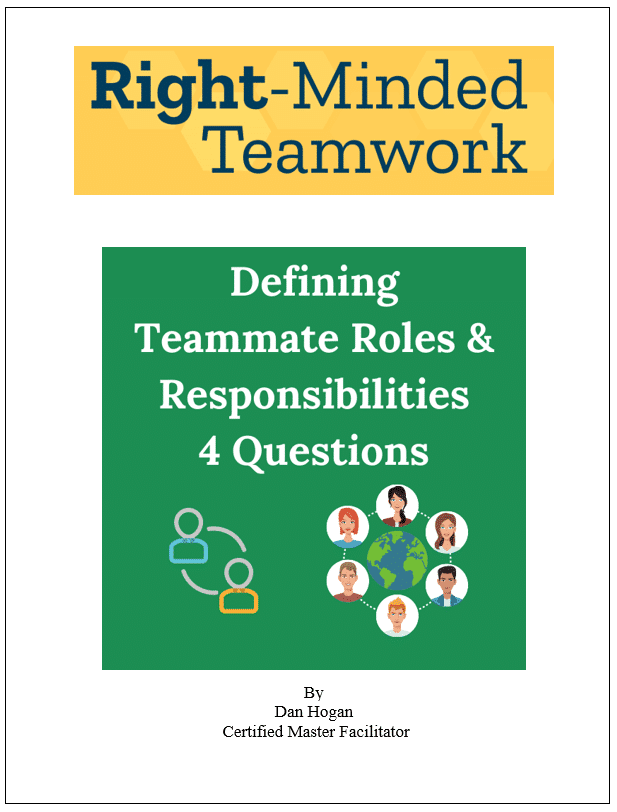Workplace bullies are NOT the only people who must change; decent people must change too!
In this article, we will outline two interventions you can use because workplace bullies win when decent people like you do nothing.
Table of Contents
- If We Permit It, We Promote It!
- Common Workplace Bully Behaviors
- Who Is Responsible for Bully Teammate Behavior?
- Why You Must Take a Stand
- Two Interventions – How To Do…
- Helpful Resources
- To Sum Up
If we permit it, we promote it.
Bullying behavior is intense. It is emotionally immature, and it is unacceptable.
Therefore, it must be stopped.
In my 35-year team facilitation experience, I witnessed many decent people compassionately do their part to transform the bully into a collaborative teammate.
In short, it can work if you try.
If you are a bully’s victim or you are a witness to others being bullied, do not avoid your responsibility.
Take a stand for eliminating all forms of bullying behavior in your team.
Remember, if we permit it, we promote it!
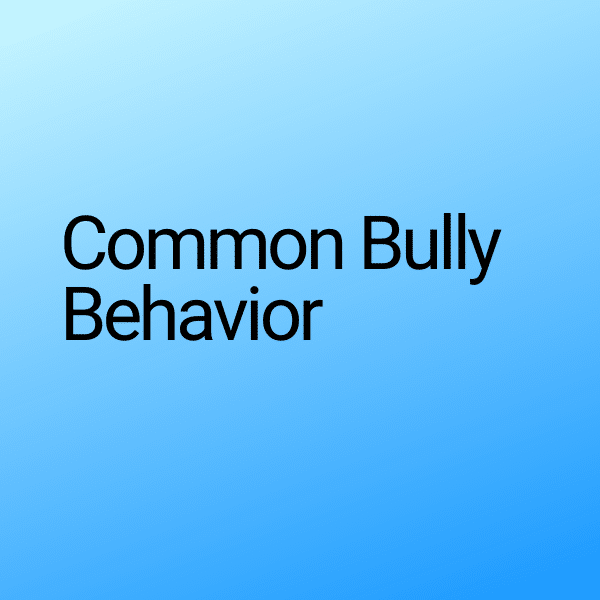
Common workplace bully behaviors
- Verbal abuse
- Malicious gossip, rumors, and lies
- Threats and intimidation
- Cruel comments and teasing
- Ignoring or excluding individuals
- Unduly harsh and constant criticism
- Aggression
- Abuse of authority
- Interference with work performance
- Bullying through social networking
- Physical assaults
Are any of these happening in your team? If yes, read on.
By the way, if you are struggling with a constantly complaining teammate [a form of bullying], use these 7 lessons to transform that relationship.
Who is responsible for bullying teammate behavior?
Every teammate!
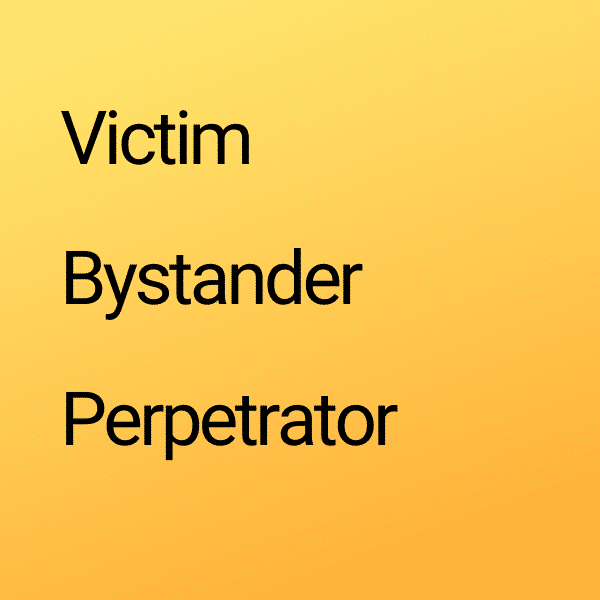
There are three types of teammates in this situation. All have equal responsibility.
- The Victim – the bully’s target
- The Bystander – teammates who see the abusive behavior and choose to either do nothing or to intervene
- The Perpetrator – the bully
Teammate Responsibilities
The Bully
- Their responsibility is to change their misguided perceptions and abusive behavior.
- However, you must remember, they are not yet strong or mature enough to know how to change.
- Therefore, the victim and bystander must step in to initiate the change.
The Victim & Bystander
- Their responsibility is to change their avoidance attitude and behavior by assertively communicating to the bully that their behavior is no longer acceptable. Going forward, they must change into a collaborative teammate.
- It is important to remember that bullies are emotionally immature. They are merely little children who are having a temper tantrum.
- As the victim or bystander, you must gently, but firmly, teach them how to behave properly.
- That is to say, this intervention is no different as to how you would lovingly correct your own child’s behavior.
Why Must You Take a Stand?
It is simple.
If you deny the severity of the behavior and avoid speaking up, you are equally as accountable for the damage the bully is causing in your team.
Do No Harm. Do Your Part, by Working As One.
If you are currently a bully’s victim or a bystander, ask yourself these questions…
What will it take for me to take a stand against the harm I see or feel?
How much more pain should I take or observe before I say, “Enough already!?”
How will I take a stand, now?”
The answers to these questions will be revealed to you ONLY when you get sick and tired of being sick and tired of the bully’s behavior.
Two Interventions
Group Intervention

The first and most potent option is a Group Intervention.
This is where all teammates gather to voice their ideas and emotions directly to the bully. These interventions are usually intense.
Therefore, they must be properly planned and facilitated by a Certified Master Facilitator or licensed counselor.
Moreover, you must create a clear set of unambiguous behavioral descriptions that are written down and given to the bully.
Those start-stop-continue behaviors will spell out what is and is not acceptable behavior.
The bully’s supervisor will first give the list to the bully in private and then immediately take the bully into a room where the remaining teammates will validate the necessity for behavioral change.
Another Group Approach: Define Teammate Roles & Responsibilities
With a little creative modification, you could use this Right-Minded Teamwork FREE team-building exercise to communicate that bullying behavior is not acceptable.
Individual Intervention
If a group intervention is not an option, follow these three steps for an Individual Intervention.
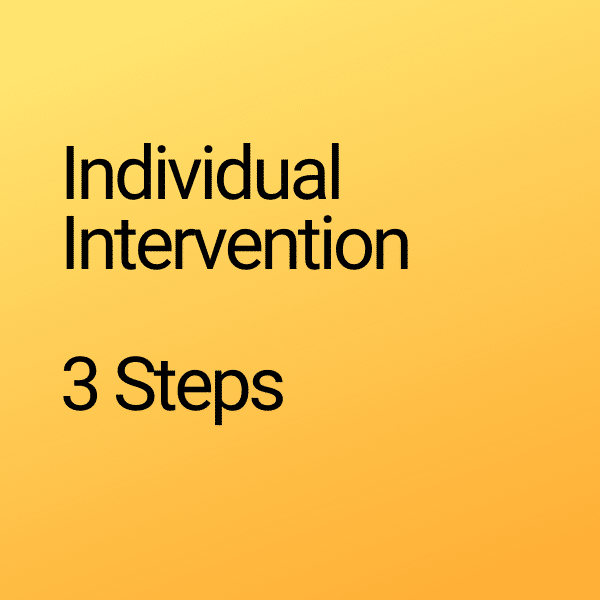
1. Take an honest look inside–introspection.
Uncover your fears of speaking up.
Be gentle, but firm with yourself. It is not helpful to feel guilty over your past behavior, just make a solemn vow you will rise above your fears, and you will not allow anyone to bully you any longer.
In short, make that commitment. It is a gift to yourself.
Furthermore, regain emotional control. Become a neutral observer—a detective of sorts, constructing a different way to approach the bully.
You are not inflaming their anger. You are demonstrating your resolve.
Keep a log of their bullying behaviors. One incident is not enough. What is important is the number, regularity, and the patterns that reveal bullying behavior. It is the patterns that expose their bully and emotionally immature intent.
Finally, find it inside yourself to believe the bully is a decent person deep down inside. They can change with education and firm, loving support!
2. Describing the bully’s behavior, as a neutral observer, is not difficult when you do not let your fears and anger trip you up.
It is imperative to deliver your message in an assertive way, not an aggressive or angry way.
First, you need to describe their behaviors and patterns in a neutral way without being critical, accusatory, or judgmental.
Secondly, you voice what you have seen them do, or what you’ve heard them say. Let them know those behaviors are not working for you.
Finally, say what you want without telling them what to do.
Here is an excellent example of how to do that. “I have a right to live free from behind-the-back accusations and blame. I want that behavior to stop. How can we achieve that?”
After you have said that, stop talking.
Above all, you must listen to their side of the story and insist on creating a go-forward work agreement. Your work agreement needs to be specific, and it requires all parties to do something differently going forward.
3. If you succeed in creating a Work Agreement, you will immediately feel a huge sense of relief.
However, do not be deceived.
It will not take awfully long for the work agreement to be broken either by you or the bully.
But, do not get discouraged, either.
It is not about living the agreement perfectly; it is about recovering when the agreement is broken.
Just take a deep breath, acknowledge the incident, and insist that the bully and you recommit to the work agreement.
Furthermore, the agreement will likely be broken more times. That means you will need to recover each time.
But, if you stick with it, the breaks will happen less frequently, and someday the desired behaviors will be all that is left!
Helpful Resources
There are many resources available to you. Here are a few ideas.
Fingerprint for Success, a professional & personal development platform for individuals & teams, has many excellent resources for you.
Workplace Bullying Institute – has over two decades of service with wonderful resources for you.
Career Contessa – Watch a six-minute video that gives you six tips for dealing with a workplace bully. With these six tips, you will feel more confident in your work, and hopefully, you’ll be able to find the support you need.
Or, for more help, talk with a trusted friend, contact your Employee Assistance Program, reach out to a therapist, or contact me.
Martin Luther King Jr. – A Wonderful “Decent Person” Role Model
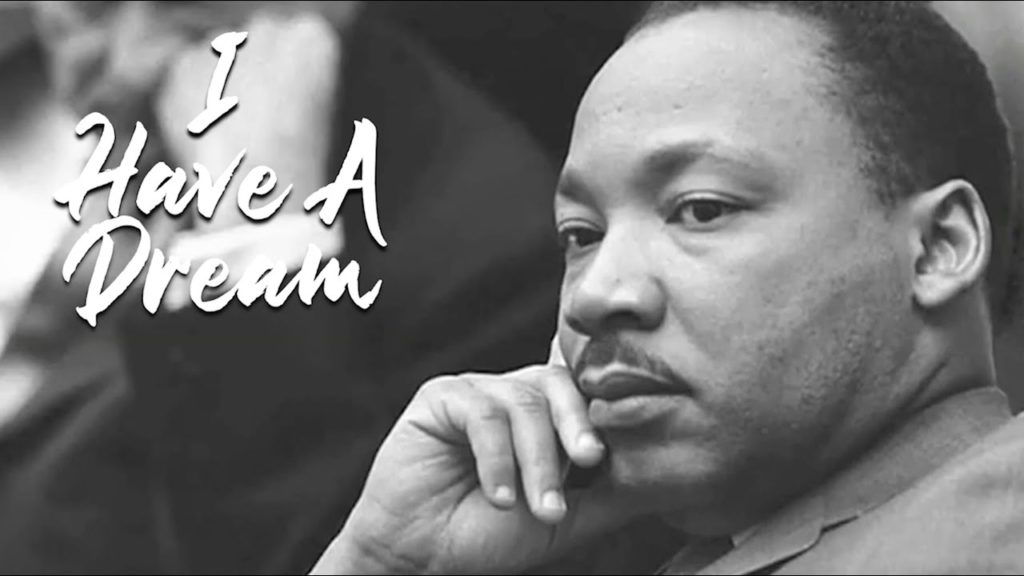
Martin Luther King’s courage in taking a stand for African Americans and all disenfranchised people for that matter is a role model for us all.
The silent majority, the ones who knew segregation [a severe form of institutional bullying] was wrong and harmful, were encouraged by his words and his steadfast conviction. Only after years of firm civil rights interventions, did decent people stand up to that harmful bully behavior.
Be like Martin Luther King Jr. because there’s plenty more work to do to achieve the ‘dream’ of basic human rights for all.
One specific way you can demonstrate your resolve to do no harm, is to do your part—today. Transform the workplace bully that is in your team.
Will you join the majority of decent people by taking a stand?
To Sum Up…
Think of the bully as a scared little child who wants to shut you out.
But you and your teammates want to bring them into your circle of collaborative teammates.
Here is a wonderful poem by Edwin Markham – “Outwitted” – that is a powerfully simple mandate on how you can do just that.

To Your Success, Dan Hogan

